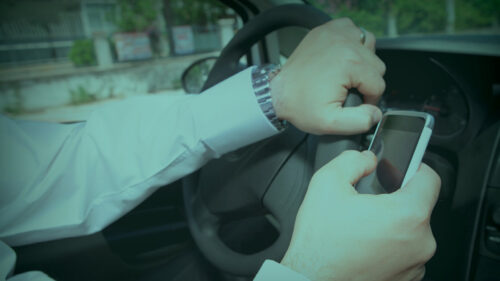While behind the wheel, how often do you see other drivers talking on, texting on, or checking their phones? Moment of honesty — how often do you do it yourself?
It’s a pretty big problem…in fact, so big that 46 states have banned the use of texting while driving. According to the Official U.S. Government Website for Distracted Driving, at any given moment during daylight hours, over 660,000 vehicles are being driven by someone using a hand-held cell phone. That’s a scary statistic, isn’t it? However, the issue goes far beyond just talking and texting anymore. Drivers are becoming distracted by apps such as Snapchat, Facebook, Instagram, Twitter, Google Maps, Spotify, YouTube — you name it. This has caused 14 states to ban the use of hand-held cell phones altogether.
When it comes down to it, cell phone use could result in negligence per se. Parties are looking for that direct evidence of fault or distraction on the other side in the form of:
- Making calls
- Text messaging
- Emailing
- Use of GPS
- Taking pictures of scenery
- And more
With unlimited smart phone capabilities these days, individuals don’t know they’re constantly creating potentially discoverable information. Keep this in mind…the major cell phone providers retain cell phone information as follows:
- Call records for one to five years
- Text message details for one to seven years
- Geographic cell tower information for up to one year
And it’s not just the cell phone user who needs to be concerned. When it comes to legal issues, mobile app providers may have just as much to lose. For example: The Snapchat app features a filter that records speed of travel and has been cited in many different accidents (here’s one just to give you an idea). Snapchat may start to see lawsuit allegations claiming the provider is equally responsible in crashes for failing to remove the filter from its app.
While a big contributor, cell phones actually aren’t the only method of distraction for drivers. Eating, changing the radio station, talking to passengers, and entering an address into your vehicle’s GPS system are all forms of distracted driving. It encompasses anything that visually, manually, OR cognitively distracts you. Now let me refer back to my first paragraph…how often do you see others or are you yourself distracted? The answer may have just significantly increased.
According to a Travelers’ study, drivers spend more than half their time focused on things other than driving when behind the wheel. We’re just adding up the scary statistics now, aren’t we? The study showed that the likelihood of an accident increases by 23 times when texting, 9 times when reaching for something, 4 times when reading a map or GPS system, 3 times when grooming, and doubles when eating.
The Centers for Disease Control and Prevention released another sobering statistic — more than 8 people are killed every day in the United States and 1,161 are injured due to crashes that are reported to involve a distracted driver.
So what can you as a company do to ensure your employees don’t become a statistic while also adhering to the rules of the road? You may want to start by having a cell phone policy in place for all company vehicles. In case you haven’t established one yet, the National Safety Council has created The Free Cell Phone Policy Kit. The kit contains a sample policy, white papers, posters, communications, and much more!
You can also talk to our Holmes Murphy staff. We’re available to make sure our clients are aware of the distracted driving statistics and how these behaviors have an impact on future auto insurance rates and claims. We can easily consult with you to help you manage your auto risks. Think ahead to avoid issues “down the road!”







